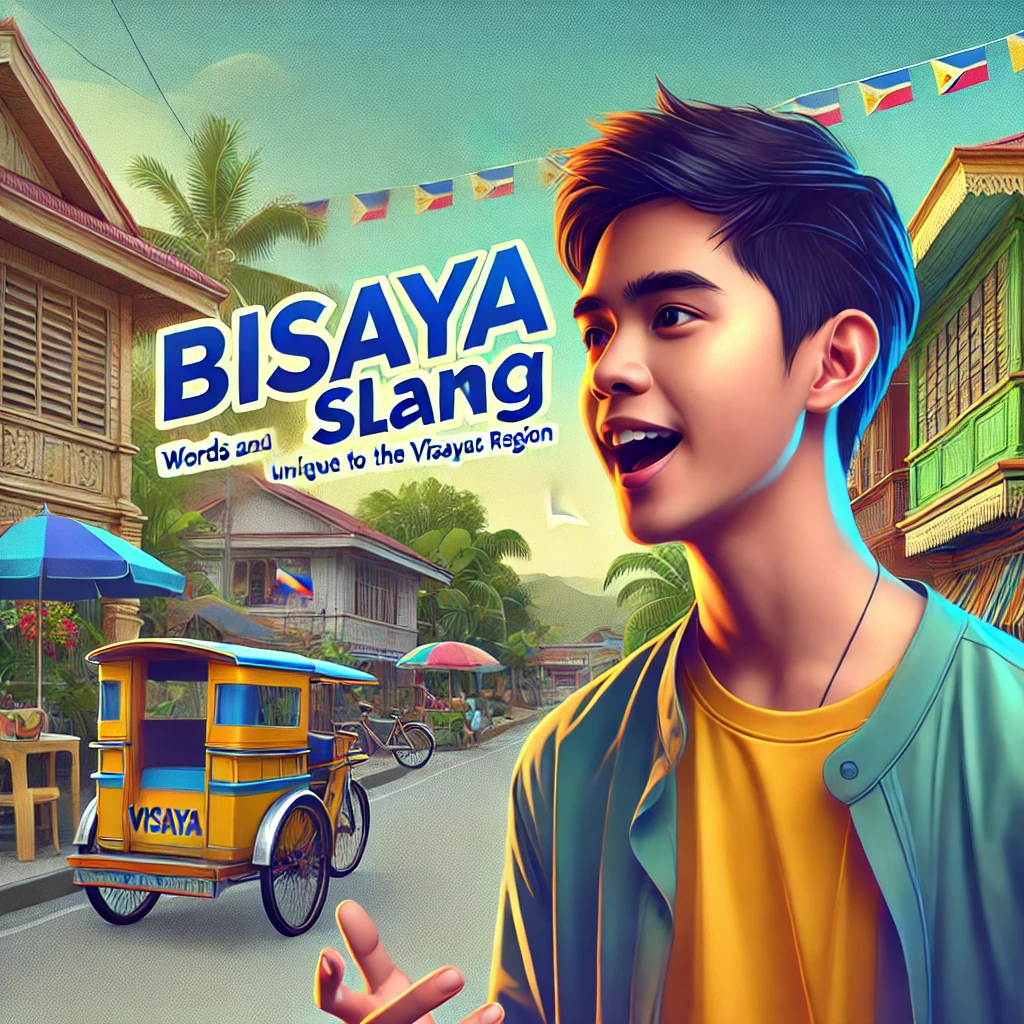Kumusta, mga kaibigan! Welcome to our ultimate guide to Tagalog slang. If you’re looking to spice up your Filipino vocabulary or just want to sound like a local in the streets of Manila, you’ve come to the right place. We’re about to dive into the colorful world of Tagalog slang, where words take on new meanings and phrases can make you scratch your head in confusion (or laugh out loud in delight). So, buckle up, and let’s get ready to speak Tagalog like a true Pinoy!
The Importance of Slang in Tagalog
Before we jump into the juicy stuff, let’s talk about why slang is such a big deal in Tagalog. You see, Filipino culture is all about connection, humor, and expressing yourself with flair. Slang words and phrases are like the secret sauce that adds flavor to everyday conversations. They’re the linguistic equivalent of that extra kick of sili in your adobo – not necessary, but oh so satisfying!
Slang in Tagalog isn’t just about sounding cool (although that’s definitely a perk). It’s a way to build rapport, show that you’re in the know, and sometimes even navigate tricky social situations. Plus, let’s be honest, it’s just plain fun to use words that might make your lola raise an eyebrow or two.
The Evolution of Tagalog Slang
Tagalog slang is like a living, breathing entity that’s constantly evolving. What was hot in the ’90s might be totally baduy (outdated) now. The rise of social media, pop culture, and even political events have all played a role in shaping the slang landscape. Remember when “planking” was a thing? Well, Filipinos had a field day with that one, creating slang terms faster than you could say “picture time!”
But it’s not just about new words popping up. Sometimes, old words get new meanings. Take “bongga” for example. Back in the day, it meant something was impressive or fabulous. Now, it might be used ironically to describe something over-the-top or exaggerated. It’s like linguistic recycling – environmentally friendly and endlessly creative!
The Influence of Other Languages on Tagalog Slang
One of the coolest things about Tagalog slang is how it borrows from other languages. It’s like a linguistic potluck where everyone brings a dish to share. English, Spanish, Chinese, and even Japanese words have found their way into the Tagalog slang dictionary. This multilingual mashup is a testament to the Philippines’ rich history and diverse cultural influences.
For instance, you might hear someone say “pabebe” (acting cute or childish) which comes from the English word “baby.” Or how about “chika” (gossip), which has its roots in the Spanish “chismis”? It’s like a global language party, and everyone’s invited!
The Most Common Tagalog Slang Words and Phrases
Alright, let’s get to the good stuff! Here’s a rundown of some of the most common Tagalog slang words and phrases you’re likely to hear on the streets, in jeepneys, or scrolling through your social media feed:
Casual Greetings and Expressions:
| Slang Word/Phrase | Meaning | Example |
|---|---|---|
| Pre/Pare | Dude/Bro | “Pre, san tayo kakain?” (Dude, where are we eating?) |
| Tol | Shortened version of “Utol” (sibling) | “Tol, punta tayo sa mall?” (Bro, wanna go to the mall?) |
| Ayos | Cool/Alright | “Ayos ang bagong phone mo!” (Your new phone is cool!) |
| Astig | Awesome/Tough | “Astig yung bagong tattoo mo!” (Your new tattoo is awesome!) |
Expressing Emotions:
| Slang Word/Phrase | Meaning | Example |
|---|---|---|
| Gigil | Overwhelming feeling of attraction or anger | “Ang gigil ko sa kanya!” (I’m so annoyed/attracted to him/her!) |
| Kilig | Giddy feeling of excitement (usually romantic) | “Kilig ako nung hinawakan niya kamay ko.” (I felt giddy when he held my hand.) |
| Bwiset | Annoyed/Pissed off | “Bwiset, nawala wallet ko!” (Damn, I lost my wallet!) |
| Awit | Expression of disappointment or frustration | “Awit, bagsak ako sa exam.” (Ugh, I failed the exam.) |
Social Media and Tech Slang:
| Slang Word/Phrase | Meaning | Example |
|---|---|---|
| Churva | Chatter/Small talk | “Tara, churva tayo!” (Let’s chat!) |
| Jowa | Boyfriend/Girlfriend | “May jowa ka na ba?” (Do you have a boyfriend/girlfriend already?) |
| G | Game/I’m in | “G ako sa Boracay trip!” (I’m in for the Boracay trip!) |
| Pak | Expression of agreement or approval | “Pak! Tama ka diyan!” (Yes! You’re right about that!) |
The Art of Using Tagalog Slang
Now that you’ve got a taste of some common slang words, let’s talk about how to use them without sounding like a walking, talking slang dictionary (because that’s just baduy, trust me). The key is to sprinkle these words into your conversations naturally, like adding patis to your sinigang – a little goes a long way!
Remember, context is everything. What might be appropriate when chatting with your barkada (group of friends) might not fly when talking to your boss or your lola. It’s all about reading the room and adjusting your language accordingly. Think of it as linguistic code-switching – you’re flexing your Tagalog muscles and showing off your cultural savvy at the same time!
Regional Variations in Tagalog Slang
Just when you thought you had Tagalog slang all figured out, here’s a plot twist for you – it can vary depending on where you are in the Philippines! That’s right, slang isn’t just a Manila thing. Different regions have their own flavors of slang that reflect local culture, history, and even geography.
For example, if you’re in Cebu, you might hear “piste” instead of “bwiset” when someone’s annoyed. Or in Davao, “bai” is often used instead of “pre” or “pare” to address a friend. It’s like a linguistic tour of the Philippines – each region adding its own special ingredient to the slang soup!
Tagalog Slang in Pop Culture
If you want to get a crash course in Tagalog slang, look no further than Filipino pop culture. Movies, TV shows, music, and even commercials are goldmines of slang expressions. Remember the iconic “Walang ganun, Mars!” from the movie “Four Sisters and a Wedding”? That’s slang gold right there!
Filipino musicians are also slang trendsetters. From the playful lyrics of Parokya ni Edgar to the street-smart rhymes of Filipino hip-hop artists, music has been instrumental in popularizing and spreading slang terms. So, if you want to stay up-to-date with the latest slang, keep your ears open and your playlist updated!
The Do’s and Don’ts of Using Tagalog Slang
Alright, now that we’ve armed you with all this slang knowledge, let’s talk about how to use it responsibly. Think of this as your Tagalog slang etiquette guide:
Do’s:
- Use slang to build rapport and show familiarity
- Be aware of the context and audience
- Learn the nuances and subtle meanings of slang terms
- Have fun and be creative with language
Don’ts:
- Overuse slang to the point where you’re incomprehensible
- Use slang in formal or professional settings (unless it’s appropriate)
- Assume all Filipinos use or understand the same slang terms
- Use offensive or derogatory slang without understanding its implications
Remember, slang is like durian – it’s an acquired taste, and not everyone appreciates it in every situation. Use it wisely, and you’ll be fine!
The Future of Tagalog Slang
As we wrap up our slang-tastic journey, let’s take a moment to ponder the future of Tagalog slang. With the rapid pace of technological change and the ever-expanding influence of global culture, what can we expect?
Well, if history is any indication, Tagalog slang will continue to evolve, absorb new influences, and surprise us with its creativity. We might see more tech-inspired slang, new hybrid words combining different languages, or even slang terms inspired by viral memes or social media trends.
One thing’s for sure – Tagalog slang will remain a vibrant, dynamic part of Filipino culture. It’s a testament to the Filipino spirit of adaptability, humor, and linguistic playfulness. So, whether you’re a native speaker, a language learner, or just someone who appreciates the quirks of different cultures, there’s always something new and exciting to discover in the world of Tagalog slang.
Embracing the Colorful World of Tagalog Slang
And there you have it, folks – your crash course in Tagalog slang! From casual greetings to expressions of emotions, from social media lingo to regional variations, we’ve covered a lot of ground. But remember, this is just the tip of the iceberg. The world of Tagalog slang is vast, ever-changing, and endlessly fascinating.
So, the next time you find yourself in a conversation with Filipino friends, don’t be afraid to throw in a “Pre, ang astig ng new slang mo!” (Dude, your new slang is awesome!). Who knows? You might even start a new slang trend yourself!
Keep your ears open, your mind curious, and your sense of humor ready. The colorful world of Tagalog slang is waiting for you to explore. Sige, G na tayo! (Alright, let’s go!)
Disclaimer: This blog post is based on information available up to 2022. Slang terms and usage may have evolved since then. We encourage readers to engage with native speakers and stay updated on current trends. If you notice any inaccuracies, please report them so we can correct them promptly. Remember, slang is fluid and subjective – what’s popular in one circle might be outdated in another. Use your judgment and have fun with language!




